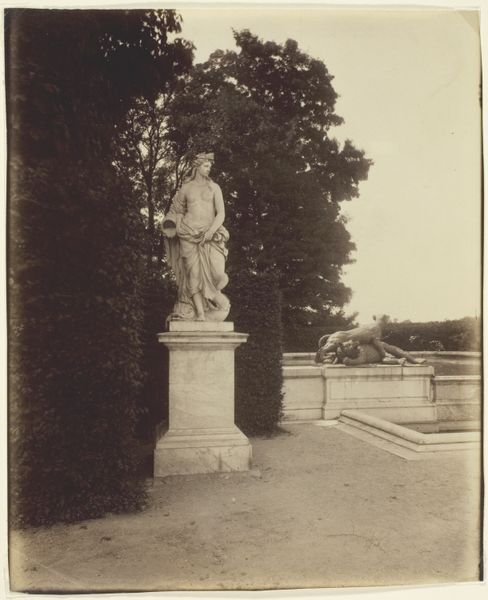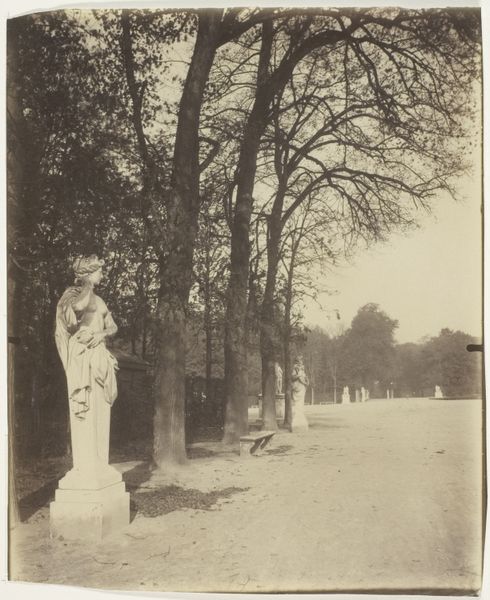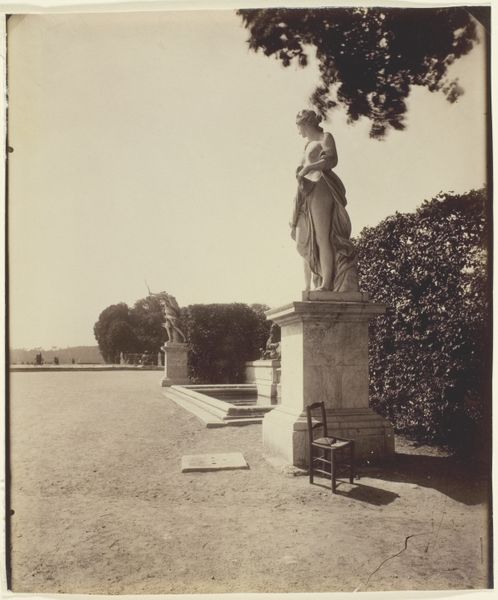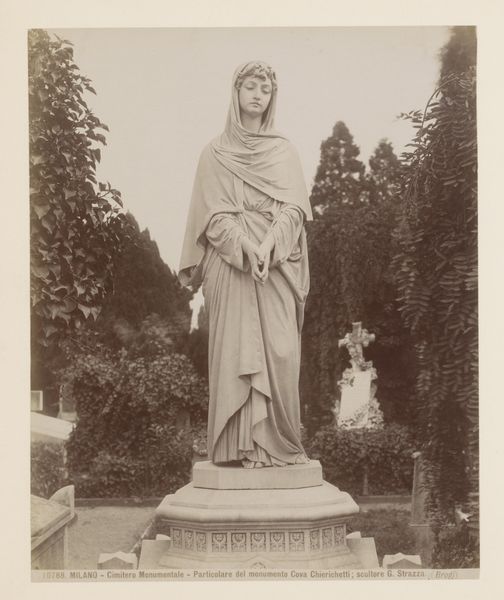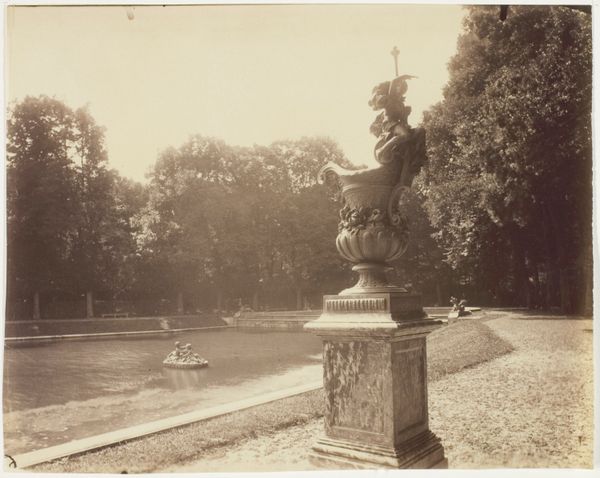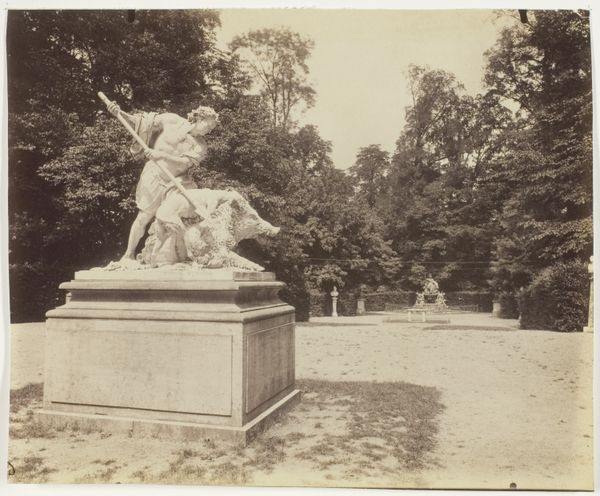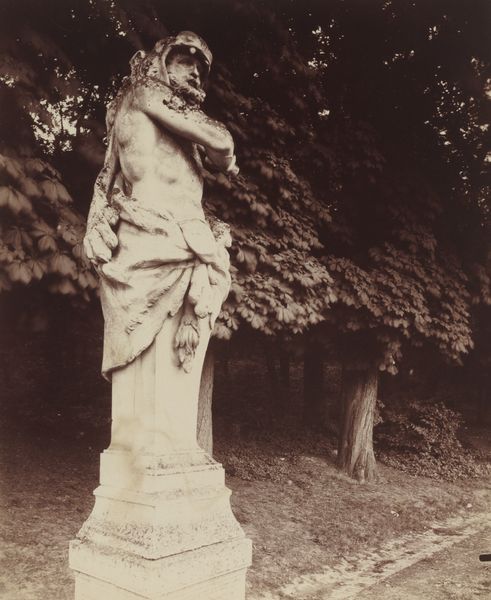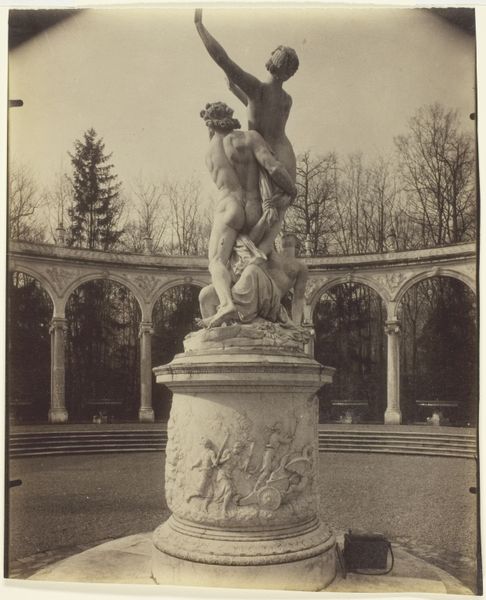
print, plein-air, photography, site-specific
# print
#
plein-air
#
landscape
#
classical-realism
#
photography
#
site-specific
#
france
#
men
#
academic-art
Dimensions: 21.7 × 17.6 cm (image/paper)
Copyright: Public Domain
Curator: Here we have Eugène Atget's photograph, "Versailles, Coin de Parc," taken in 1903, part of his extensive project documenting the parks of France. Editor: It's wonderfully atmospheric. The composition is almost theatrical, with the statue stage left, bathed in light against the dense shadows. It evokes a sense of lingering time and bygone eras. Curator: Indeed. Atget’s photographs, although seemingly straightforward documentation, were highly influenced by the politics of preservation in early 20th-century France. They captured a sense of old Paris, often elegiac and nostalgic. Think of the state's conscious effort to maintain cultural heritage amid rapid modernization. Editor: I see your point about the preservation efforts. The statue's placement along this linear garden path creates an intriguing interplay of perspective and form. I’m also thinking about the semiotics of landscape photography here. It is more about framing and viewpoint and a desire to compose through perspective rather than documenting the natural world as is. Curator: Exactly. These photos provided source material for painters, stage designers, and, importantly, served as archival records for the French government—preserving the cultural value and public identity associated with places like Versailles. The parks themselves, redesigned throughout the 17th and 18th centuries, reflect evolving ideals of royal power and social order. Editor: The textures are captivating. I like how Atget has rendered the stone of the sculpture and its surrounding foliage with such tonal depth, despite the monochromatic limitations. The soft sepia tones reinforce that feeling of history, but there’s also a quiet intimacy in this corner of the park. Curator: Yes, it highlights how the controlled aesthetics of these aristocratic gardens filtered down into the public consciousness, even impacting photographic composition later. This corner is designed to evoke a particular emotional response in the viewer: reverence and maybe some introspection on the weight of history. Editor: I was simply taken by the artistry of the tones! However, understanding how this reflects both a moment in time and the public life that produced it makes for a rich appreciation of the picture. Curator: It illustrates how public works can affect the broader artistic scope, creating cultural memories—and affecting the aesthetic considerations for future works of art.
Comments
No comments
Be the first to comment and join the conversation on the ultimate creative platform.
